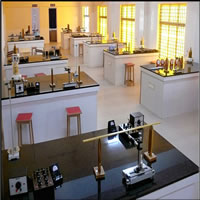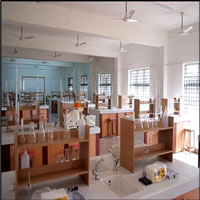
OBJECTIVES
To introduce different experiments to test basic understanding of physics concepts applied in optics, thermal physics, properties of matter and liquids.
LIST OF EXPERIMENTS
- Determination of rigidity modulus – Torsion pendulum
- Determination of Young‘s modulus by non-uniform bending method
- (a) Determination of wavelength, and particle size using Laser
(b) Determination of acceptance angle in an optical fiber.
- Determination of thermal conductivity of a bad conductor – Lee‘s Disc method.
- Determination of velocity of sound and compressibility of liquid – Ultrasonic interferometer
- Determination of wavelength of mercury spectrum – spectrometer grating
- Determination of band gap of a semiconductor
- Determination of thickness of a thin wire – Air wedge method
OUTCOMES
Upon completion of the course, the students will be able to:
- Apply principles of elasticity, optics and thermal properties for engineering applications.
FACULTY IN-CHARGE
Mr. T. Sundareswaran

